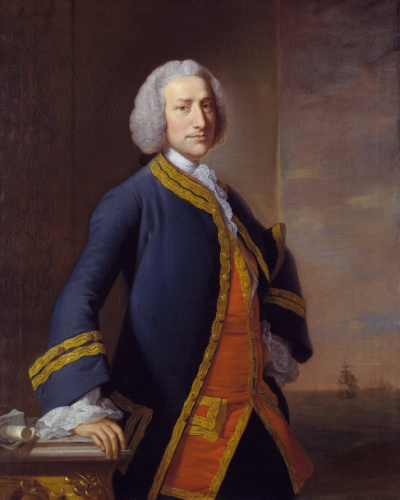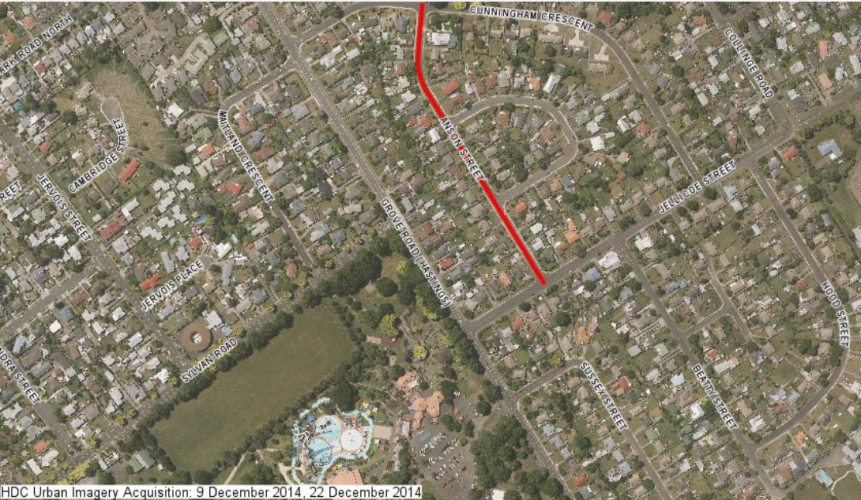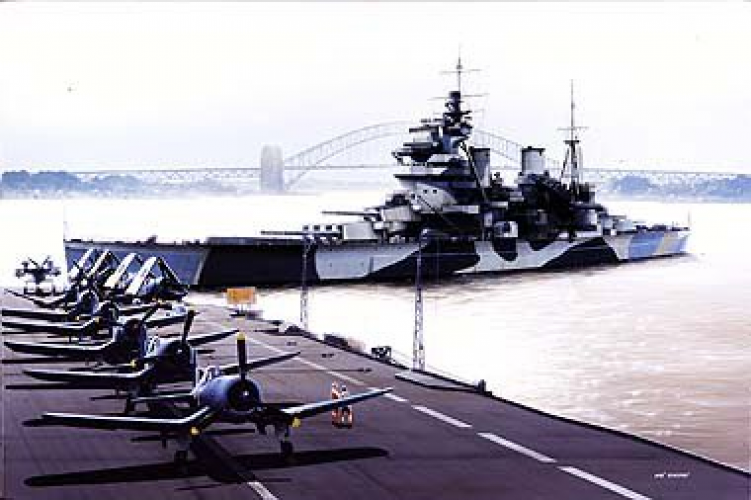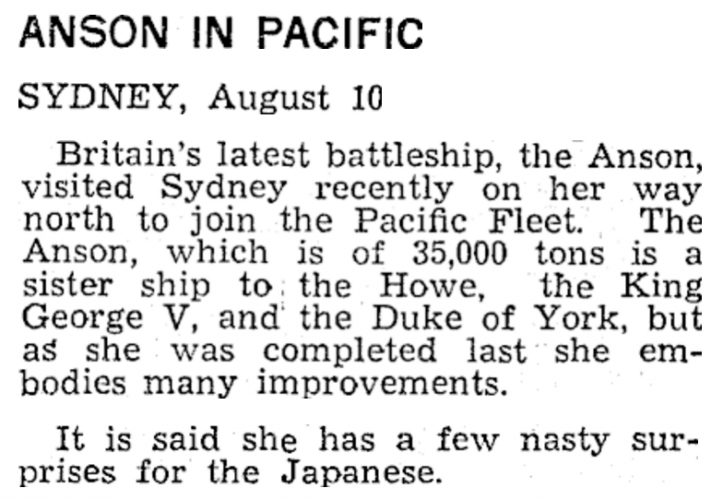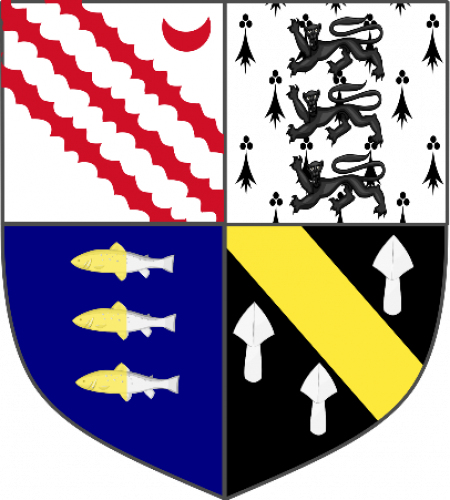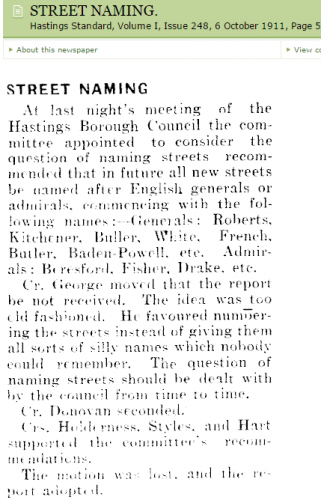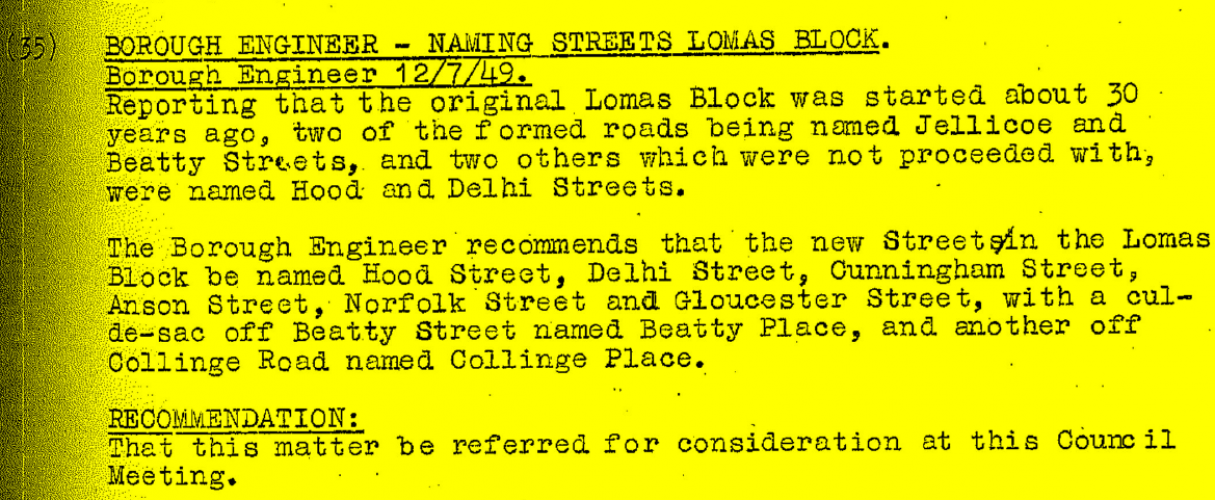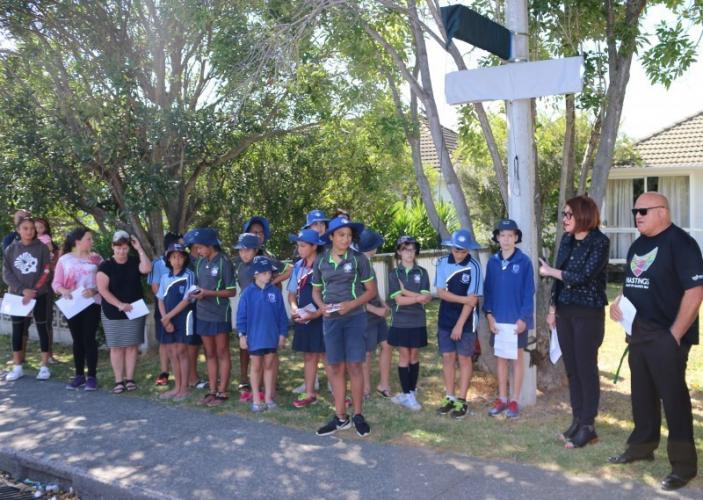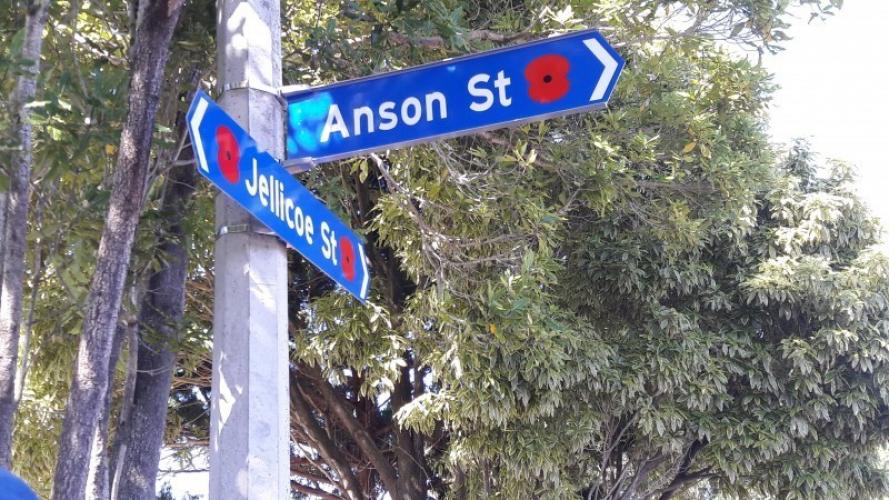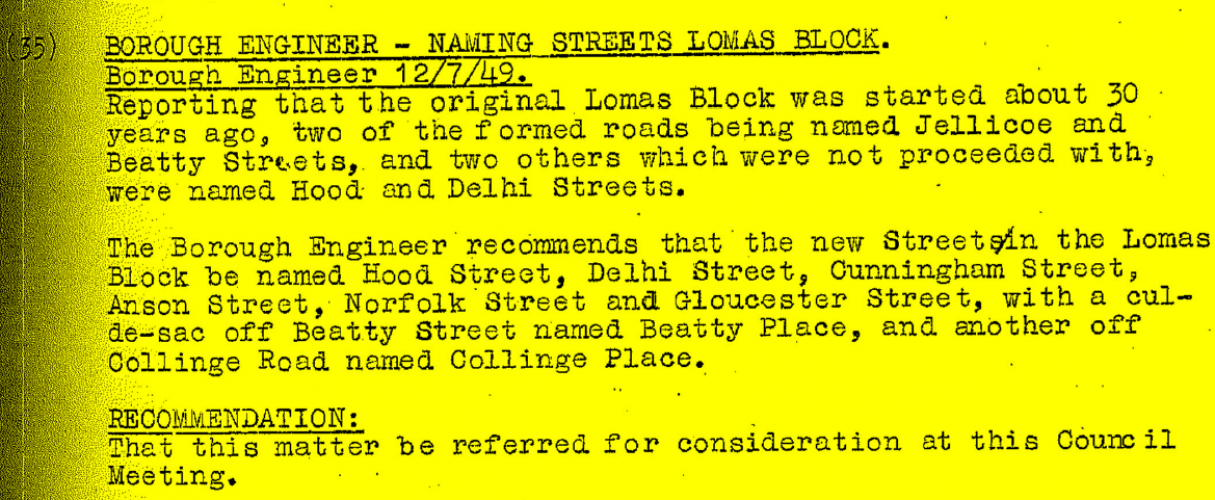058 Anson St Hastings, Mayfair School Students 2016
Reason for the name
Anson Street Hastings was named after the King George V-Class Battleship HMS Anson, of the Royal Navy in 1949. The battleship itself was named after Admiral of the Fleet, George Anson, 1st Baron Anson.
Anson Street is part of what was once called the Lomas subdivision in the Mayfair suburb of Hastings, near Windsor Park and local attraction Splash Planet.
The streets in this area were all named for naval reasons, after admirals or battleships (Jellicoe, Beatty, Hood, Cunningham, Sussex, Norfolk and Anson).
Council records show the naming of Hood Street (confirming a 1916 decision which also named Jellicoe and Beatty Streets), Cunningham Crescent, Anson Street, Norfolk Street and Sussex Street were decided in 1949, with the subdivision happening from 1951.
The naming of Anson Street was first recommended in the Borough Engineer's report on 12/7/1949 that one of the new streets in the Lomas block that was originally started 30 years previously be called Anson Street. This recommendation was referred for consideration at the ordinary meeting of the Hastings Borough council held on 15th of March 1951.
Hastings Borough Council had a policy in the early 1900s of naming new streets after English generals or admirals. It was under this direction that “naval” streets Beatty, Jellicoe and Hood were named.
About 7000 New Zealand officers and ratings served with the Royal Navy for varying periods during the Second World War. The peak was reached in September 1944 when the total strength of the Royal New Zealand Navy was 10,635, of whom 1242 officers and 3659 ratings, a total of 4901, were serving overseas in ships and establishments of the Royal Navy. New Zealanders saw active service in ships of every type from battleships and aircraft-carriers to submarines, motor-launches, and landing craft and in every sea from Spitzbergen in the Arctic to Cape Horn and from Iceland to the shores of Japan. They took part in every major naval engagement or operation and in countless minor actions, as well as in the ceaseless patrols and sea drudgery that make up so great a part of naval warfare...
It was thus appropriate that several new streets being developed just after WWI, and added to after WWII, were named after important naval leaders and ships.
The names for Jellicoe Street, Beatty Street and Hood Street had already been decided in 1916, although Hood Street wasn’t developed until later.
As noted, the names Cunningham, Sussex, Norfolk and Anson were added to the new streets developed after WWII. These were all naval names, for ships or admirals.
- Admiral Cunningham (nicknamed ABC) was in charge of the naval defence forces.
- The surrender of the Japanese forces in Singapore was accepted aboard the HMS Sussex.
- HMS Norfolk was one of the battleships that sank the Bismarck.
- HMS Anson was to have been named HMS Jellicoe, and was one of the important battleships in the defence of the Commonwealth. It was also one of the battleships assigned to the Pacific Fleet.
Authors: Calais and Hollie, with assistance from June Crawford (Mayfair School, Hastings), Cherie Flintoff, Hastings District Council
Anson street Hastings was named after a King George V-Class Battleship of the Royal Navy in 1949. The battleship itself was named after Admiral of the Fleet, George Anson, 1st Baron Anson. George Anson, First Baron, was born in Staffordshire, England on the 23rd of April 1697. He passed away 6th June 1762, aged 65, in Moor Park, Hertfordshire. George Anson was ranked Admiral of the Fleet, one of the highest common ranks. George Anson had served in several different wars and battles, such as the War of the Spanish succession, the War of the Quadruple Alliance, the War of Jenkins Ear, the Austrian Succession and the Seven Years War.
The most interesting of the battles Lord Anson participated in was the War of Jenkins Ear. This was a conflict between Britain and Spain (1739-1748). Its unusual name refers to an ear of Robert Jenkins, the captain of a British merchant ship ’Rebecca’, which was severed following the boarding of his vessel by Spanish Coastguards in 1731. Jenkins returned to England, with his ear pickled in a bottle. Jenkins’ ear was used as a symbol of English pride by those keen to go to war, who said the Spanish must be taught a lesson. Interestingly enough the war did not start until 8 years later in 1739.
HMS ANSON
George Anson had a King George V-Class battleship of the Royal Navy named after him.
The Battleship was ordered from Swan Hunter and Wigham Richardson Shipyard of Newcastle on 28th April 1937 under the 1937 build programme and laid down on 20th July that year. Originally the ship was to be named JELLICOE but this was changed to ANSON before launch on 24th February 1940. The ship was 227.1 metres long. She was launched on 24 February 1940, being completed on 22 June 1942. Her completion was delayed to allow the fitting of fire-control radar and additional anti-aircraft weapons.
HMS Anson served in World War II, escorting nine Russian convoys in the Arctic by December 1943. She took part in diversionary moves to draw attention away from Operation Husky in July 1943. In October the same year she took part in Operation Leader. In February 1944 she provided cover for Operation Tungsten, the successful air strike against the German battleship Tirpitz.
HMS Anson spent most of her time in the Home Fleet on Convoy Duty on the Murmansk Convoy Route and was transferred to the Pacific Fleet.
She became the flagship of the 1st Battle Squadron of the British Pacific Fleet. Post -war duties included leading the task force that liberated Hong Kong two days before the formal surrender ceremony in Tokyo, August 30th 1945. HMS Anson was a Guard ship at Tokyo and saw duty off Australia from January to July 1946, becoming the flagship of the 1st Battle Squadron of the British Pacific Fleet. After a brief refit, Anson sailed from Sydney to Hobart in February 1946 to collect the Duke and Duchess of Gloucester (the Duke was then Governor-General of Australia) and return them to Sydney.
HMS Anson arrived back in British waters on 29 July 1946, and after a short refit was returned to peacetime duties. In November 1949, Anson was placed in reserve and in 1951 she was towed to Gare Loch, spending the next three years in active service with the post-war navy. She was finally placed in reserve and "mothballed" in 1949,(stopped being used but in good enough condition to be readily used again), and in 1951 she was towed to Gare Loch. On 17 December 1957 she was purchased for scrap by Shipbreaking Industries, Faslane.
The King George V class battleship HMS Anson is pictured in Sydney Harbour where she joined the Pacific Fleet in July 1945, viewed across the flight deck of HMS Vengeance, where ten of her Vought F4.U Corsairs are ranged in front of a single folded Fairey Barracuda
Information is sparse on the people and nationalities of those who served on particular ships. New Zealanders known to have served on the HMS Anson are:
- RCCNZ Member Kenneth Aldwyn Norman Johnson, Tauranga. Kenneth Aldwyn Norman Johnson is believed to be the same Kenneth Johnson noted on the Russian Convoy Club of NZ (who were veterans of the Arctic Convoys 1941-1945) who served on the HMS Anson in World War 2, because he was in the navy and he was born in Tauranga.
- Alfred Vivian Kempthorne, Commander R.N.Z.N, O.B.E. He lived to a ripe age, passing away on 22nd February 2011, aged 92 years. His biographical information on the Auckland Museum Centotaph site shows HMS Anson is one of the ships he served on. Those interested in more about him can read Memoirs of Cdr Alfred Vivian Kempthorne RNZN, held in the Alexander Turnbull Library and at the University of Otago.
- Richard Everley Washbourn, who was born at Sumner, Christchurch on 14th February 1910 and educated at Nelson College. Washbourn transferred to HMS Anson in 1943 as a Lieutenant-Commander. He joined the Royal Navy by special entry from New Zealand in 1927 and specialised in gunnery. He later became a Rear Admiral, and Chief of Naval Staff, Royal New Zealand Navy (1963-1965).
In addition to those who directly served on the ship, other New Zealanders were connected through battles and support. For example, HMS Anson took part in an operation defending the HMS Furious Aircraft carrier in February 1944. Lieutenant (A) Durrant, one of nine or ten New Zealanders who took part in this operation, was awarded the DSC for skill and determination in attacks by his squadron on superior numbers of enemy aircraft, one of which he shot down.


